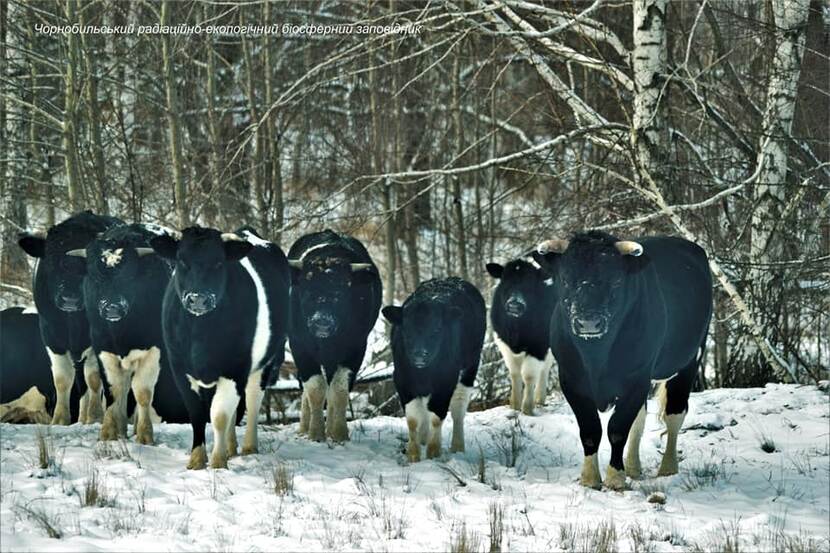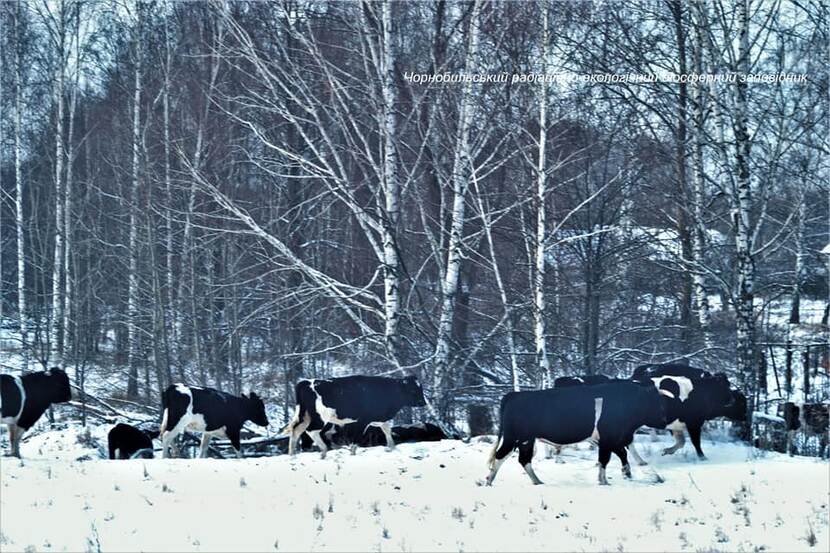Ukraine: wild cows of Chernobyl Radiation and Ecological Biosphere Reserve
The recent post on the page of the Chornobyl Reserve "WILD COWS IN WINTER: NO REASON TO WORRY" gathered a lot of likes in social media, started hot discussions not only among the readers of the Reserve Facebook page, but also heated debates in scientific circles.

Winter. Frosty and snowy. This time, the wild cows of the Chornobyl Reserve seemed to be waiting for a film crew on the outskirts of the village of Lubyanka. There will be good shots for the upcoming film about the Reserve. And scientists monitored and counted the number of herds. All animals are in good condition. Cattle are experiencing snowy and frosty weather successfully.
The herd of wild cattle is radically different from the usual rural herd: it is structured, has integrity, always acts in harmony. The herd most carefully protects its young calves. Calves, in turn, choose the safest place in the herd between an adult bull and cows. Against the background of snow a rebust and huge bull looks especially impressive. Nevertheless, young cows are well adapted to the cold.

Their wild ancestor, еhe aurochs, once lived here. This wild bull was distributed throughout the forest and steppe zone of Eurasia. He did not just live in these natural ecosystems - he played an important role in their functioning. Together with tarpan and bison, the aurochs created open landscapes by actively influencing the soil and vegetation. These animals were a necessary factor in the existence of the steppe and the mosaic structure of forests. For what they are called "ecosystem engineers".
The last aurochs died in 1627 in Poland. Three centuries later, thanks to the research of ecologists, the role of these animals in the functioning of the landscape became clear. That is, to preserve the landscape - it is not enough to bequeath it and keep intact relief, soil and vegetation. The landscape is in dynamic equilibrium, it works thanks to the "drivers" of important processes. For open landscapes, such drivers are large herbivores or, in the slang of experts, "live lawn mowers".
In the 20th century, projects began to restore the lost wild boar and tarpan by breeding livestock on "wild" grounds. The result of the projects was the creation of aurochs -like cattle and a wild horse. The process of landscape reproduction, where "ecosystem engineers" are introduced, is called "revailing".
A herd of wild cows in the Reserve appeared as a result of the death of their owners - self-settlers of the village of Lubyanka. This is not the first case in this area. After the Chornobyl accident, there was a herd of wild cattle around the former village of Chistogalivka for almost a year. Later he was driven to the experimental farm in the village New Shepelychi.
Since 2017, employees have been conducting regular observations of this herd. This unexpected case made it possible, on the one hand, to study the process of wildlife domestication, and on the other - their impact on local areas of the landscape of the river Elijah.
The authors of the publication are Serhiy Zhyla and Denys Vyshnevsky.
Photo by Sergey Zhili
Original post of https://zapovidnyk.org.ua/ - https://www.facebook.com/zapovidnyk2018